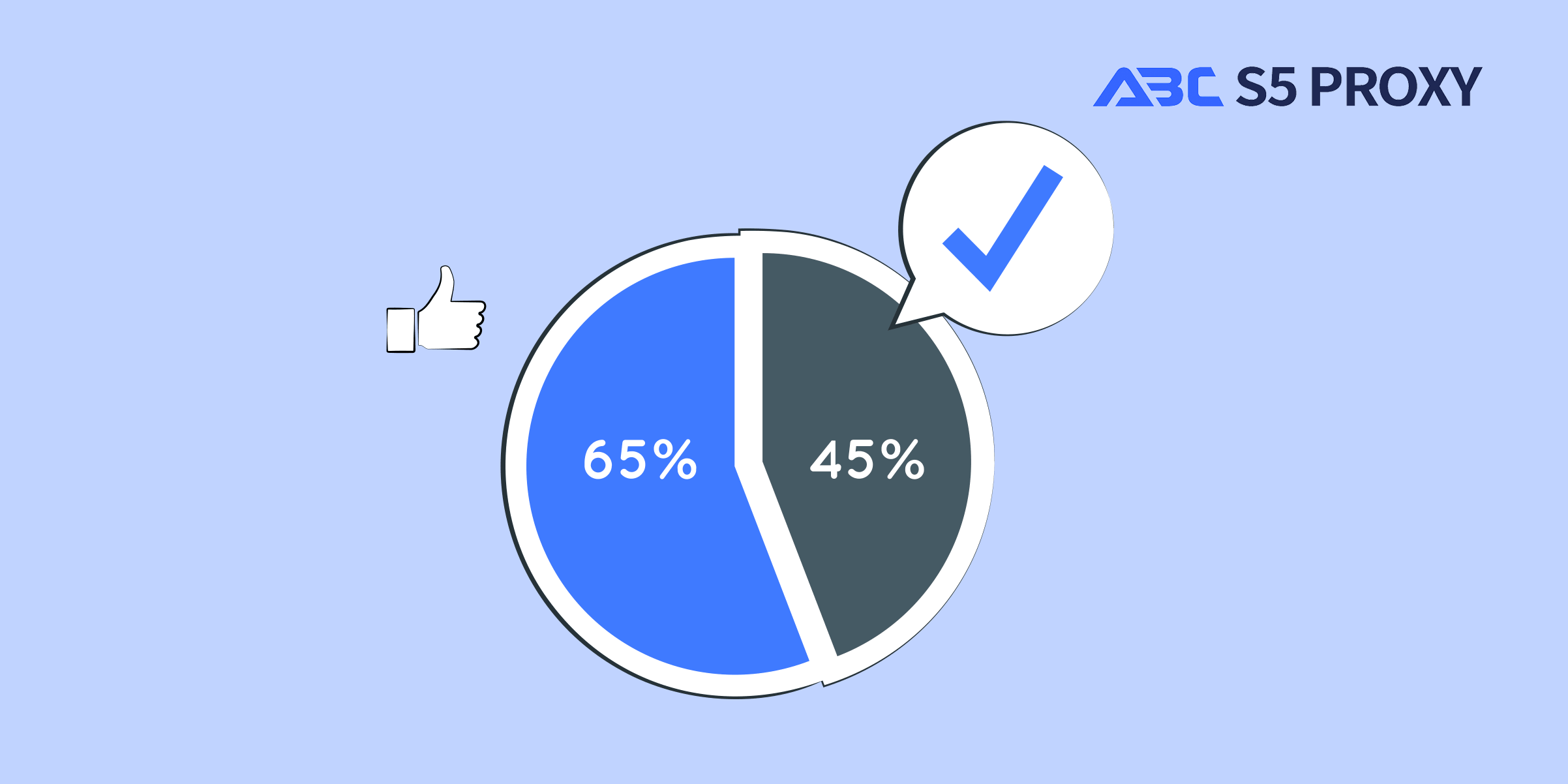Residential Proxies
Allowlisted 200M+ IPs from real ISP. Managed/obtained proxies via dashboard.

Proxies Services
Residential Proxies
Allowlisted 200M+ IPs from real ISP. Managed/obtained proxies via dashboard.
Residential (Socks5) Proxies
Over 200 million real IPs in 190+ locations,
Unlimited Residential Proxies
Unlimited use of IP and Traffic, AI Intelligent Rotating Residential Proxies
Static Residential proxies
Long-lasting dedicated proxy, non-rotating residential proxy
Dedicated Datacenter Proxies
Use stable, fast, and furious 700K+ datacenter IPs worldwide.
Mobile Proxies
Dive into a 10M+ ethically-sourced mobile lP pool with 160+ locations and 700+ ASNs.
Scrapers
Collection of public structured data from all websites
Proxies
Residential Proxies
Allowlisted 200M+ IPs from real ISP. Managed/obtained proxies via dashboard.
Starts from
$0.6/ GB
Residential (Socks5) Proxies
Over 200 million real IPs in 190+ locations,
Starts from
$0.03/ IP
Unlimited Residential Proxies
Unlimited use of IP and Traffic, AI Intelligent Rotating Residential Proxies
Starts from
$1816/ MONTH
Rotating ISP Proxies
ABCProxy's Rotating ISP Proxies guarantee long session time.
Starts from
$0.4/ GB
Static Residential proxies
Long-lasting dedicated proxy, non-rotating residential proxy
Starts from
$4.5/MONTH
Dedicated Datacenter Proxies
Use stable, fast, and furious 700K+ datacenter IPs worldwide.
Starts from
$4.5/MONTH
Mobile Proxies
Allowlisted 200M+ IPs from real ISP. Managed/obtained proxies via dashboard.
Starts from
$1.2/ GB
Scrapers
Web Unblocker
Simulate real user behavior to over-come anti-bot detection
Starts from
$1.2/GB
Serp API
Get real-time search engine data With SERP API
Starts from
$0.3/1K results
Scraping Browser
Scale scraping browsers with built-inunblocking and hosting
Starts from
$2.5/GB
Documentation
All features, parameters, and integration details, backed by code samples in every coding language.
TOOLS
Resources
Addons
ABCProxy Extension for Chrome
Free Chrome proxy manager extension that works with any proxy provider.
ABCProxy Extension for Firefox
Free Firefox proxy manager extension that works with any proxy provider.
Proxy Manager
Manage all proxies using APM interface
Proxy Checker
Free online proxy checker analyzing health, type, and country.
Proxies
AI Developmen
Acquire large-scale multimodal web data for machine learning
Sales & E-commerce
Collect pricing data on every product acrossthe web to get and maintain a competitive advantage
Threat Intelligence
Get real-time data and access multiple geo-locations around the world.
Copyright Infringement Monitoring
Find and gather all the evidence to stop copyright infringements.
Social Media for Marketing
Dominate your industry space on social media with smarter campaigns, anticipate the next big trends
Travel Fare Aggregation
Get real-time data and access multiple geo-locations around the world.
By Use Case
English
繁體中文
Русский
Indonesia
Português
Español
بالعربية

Title: Concurrency vs Parallelism: Understanding the Differences
In the world of software development, two terms that often come up in discussions about optimizing performance and improving efficiency are concurrency and parallelism. While these concepts may seem similar at first glance, they actually refer to distinct approaches to handling multiple tasks in a computing system. In this blog post, we will delve into the differences between concurrency and parallelism, explore their implications for software development, and discuss when each approach is most beneficial.
Concurrency is the ability of a system to handle multiple tasks or processes simultaneously, allowing them to make progress concurrently. This means that the system can start, pause, and resume tasks in a non-deterministic order, often switching between different tasks rapidly. Concurrency is crucial for creating responsive user interfaces, managing input/output operations, and handling multiple client requests in server applications. In a concurrent system, tasks may overlap in time but do not necessarily run simultaneously.
On the other hand, parallelism involves executing multiple tasks simultaneously, typically by utilizing multiple processing units or cores within a system. Parallelism aims to improve performance by dividing a task into smaller subtasks that can be executed in parallel, thus reducing overall processing time. This approach is common in scientific computing, data processing, and other computationally intensive applications that can benefit from utilizing multiple cores effectively.
One key distinction between concurrency and parallelism lies in how they manage resources and handle dependencies between tasks. In a concurrent system, tasks may share resources and communicate with each other through synchronization mechanisms like locks, semaphores, or message passing. This introduces the potential for race conditions, deadlocks, and other concurrency-related issues that developers must carefully manage. In contrast, parallelism focuses on breaking down tasks into independent units that can be executed in parallel without the need for coordination between tasks.
Another important consideration is the level of control and predictability offered by each approach. Concurrency introduces non-determinism, as the order in which tasks are scheduled and executed may vary depending on factors like system load and resource availability. This non-determinism can make debugging and reasoning about concurrent systems more challenging. In contrast, parallelism offers more determinism, as tasks are explicitly divided and executed in parallel, making it easier to predict and analyze the behavior of the system.
When deciding between concurrency and parallelism, developers must consider the nature of the tasks being performed, the underlying hardware architecture, and the specific requirements of the application. Concurrency is often preferred for tasks that involve asynchronous operations, event handling, or I/O-bound operations where responsiveness and resource sharing are key considerations. Parallelism, on the other hand, is well-suited for tasks that can be divided into independent subtasks that can be executed in parallel to maximize performance.
In practice, modern computing systems often combine elements of concurrency and parallelism to achieve both responsiveness and performance. Techniques like thread pools, asynchronous programming, and task parallelism frameworks allow developers to leverage the benefits of both approaches in a single application. By understanding the distinctions between concurrency and parallelism and choosing the right approach for the task at hand, developers can design more efficient, scalable, and responsive software systems.
In conclusion, concurrency and parallelism are two fundamental concepts in software development that offer distinct approaches to handling multiple tasks in computing systems. While concurrency enables tasks to progress concurrently with shared resources and synchronization, parallelism focuses on executing tasks simultaneously in independent units for improved performance. By understanding the differences between these concepts and choosing the right approach for the specific requirements of an application, developers can optimize efficiency, scalability, and responsiveness in their software systems.
Featured Posts
Popular Products
Residential Proxies
Allowlisted 200M+ IPs from real ISP. Managed/obtained proxies via dashboard.
Residential (Socks5) Proxies
Over 200 million real IPs in 190+ locations,
Unlimited Residential Proxies
Use stable, fast, and furious 700K+ datacenter IPs worldwide.
Rotating ISP Proxies
ABCProxy's Rotating ISP Proxies guarantee long session time.
Residential (Socks5) Proxies
Long-lasting dedicated proxy, non-rotating residential proxy
Dedicated Datacenter Proxies
Use stable, fast, and furious 700K+ datacenter IPs worldwide.
Web Unblocker
View content as a real user with the help of ABC proxy's dynamic fingerprinting technology.
Related articles

Enhancing Online Ad Blocking Efficiency with Residential Proxies
Title: The Impact of Residential Proxies on Online Ad BlockingIn today's digital landscape, online advertising has become an essential strategy for businesses to reach their target audience. However, with the rise of ad blocking technology, the effectiveness of online ads has been significantly challenged. This has led to the emergence of residential proxies as a solution to bypass ad blockers and ensure that ads are delivered to the intended audience.Residential proxies provide businesses with a way to mask their IP addresses with legitimate residential IP addresses, making it difficult for ad blockers to detect and block ads. By using residential proxies, businesses can effectively reach their target audience without being hindered by ad blocking software.The use of residential proxies in online advertising has proven to be a game-changer for businesses looking to improve their ad delivery rates and increase their ROI. By utilizing residential proxies, businesses can ensure that thei

Understanding the Difference Between Concurrency and Parallelism: A Comprehensive Guide
Title: Understanding the Difference Between Concurrency and ParallelismIn the world of computing, the terms concurrency and parallelism are often used interchangeably, but they actually refer to two distinct concepts that are crucial for optimizing the performance of software systems. Understanding the difference between concurrency and parallelism is essential for developers to design efficient and scalable solutions.Concurrency refers to the ability of a system to handle multiple tasks at the same time. In a concurrent system, tasks may not be executed simultaneously, but they are interleaved in such a way that it gives the appearance of simultaneous execution. This is achieved by dividing tasks into smaller units and switching between them in a rapid manner.On the other hand, parallelism involves actually executing multiple tasks simultaneously by leveraging multiple processing units or cores. In a parallel system, tasks are truly executed at the same time, leading to a significant

Everything You Need to Know About Sneaker Proxies
Title: Sneakers Proxy: A Game-Changer for Sneaker EnthusiastsIn the fast-paced world of sneaker culture, staying ahead of the game can be a challenging task, especially when it comes to securing limited-edition releases. This is where Sneakers Proxy comes into play, offering a game-changing solution for sneaker enthusiasts looking to level up their collection game.Sneakers Proxy acts as a middleman between the buyer and the sneaker retailer, providing a way to bypass restrictions and secure coveted releases. By utilizing proxy servers located in different regions, Sneakers Proxy allows users to access multiple websites simultaneously, increasing their chances of successfully purchasing sought-after sneakers.One of the key advantages of using Sneakers Proxy is its ability to mask the user's IP address, making it appear as though they are browsing from a different location. This can help in bypassing restrictions set by retailers on multiple purchases or limited releases, giving users a